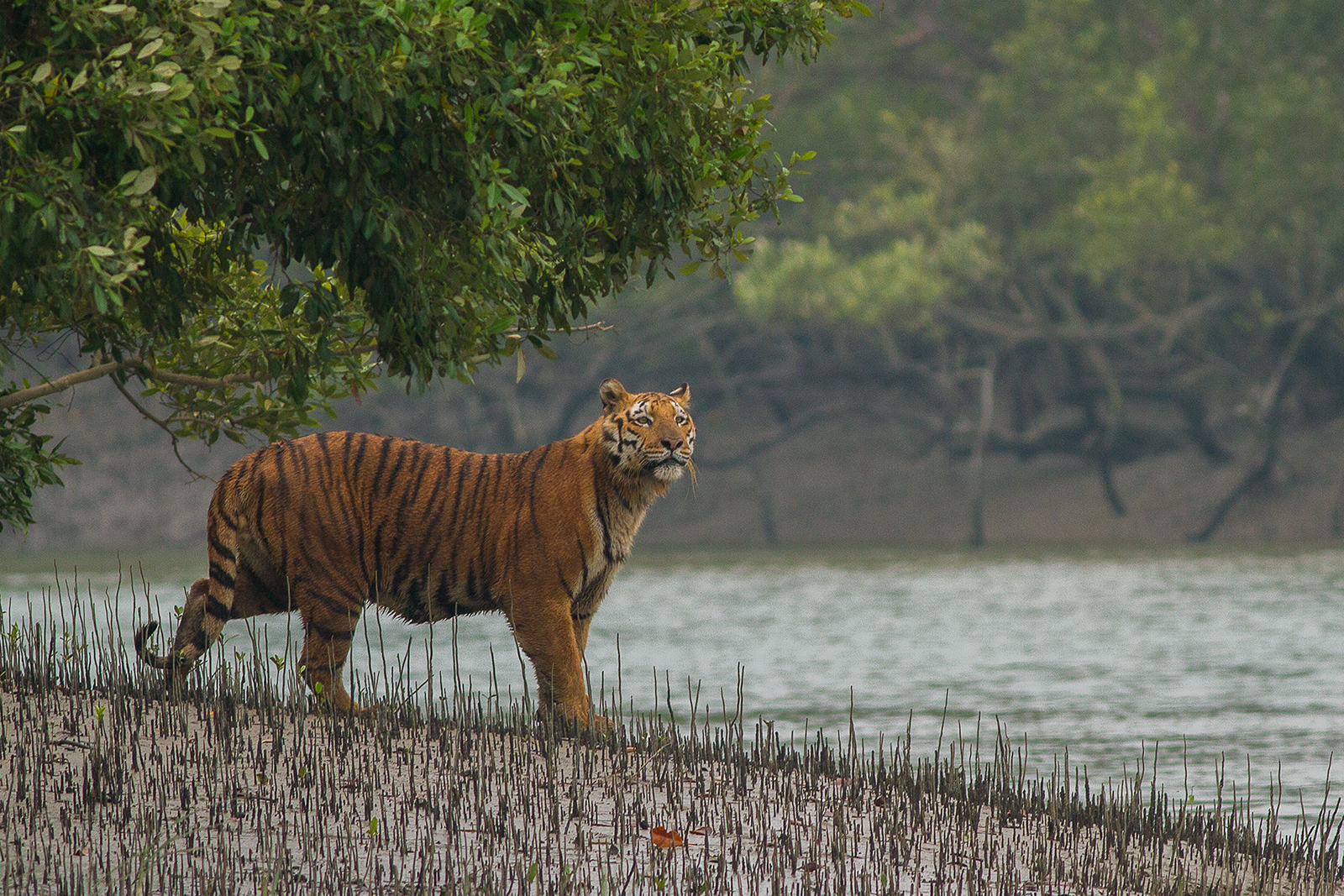The Sundarbans, a UNESCO World Heritage site, is one of the most unique and biodiverse ecosystems in the world. Situated in the delta of the Ganges, Brahmaputra, and Meghna rivers, this vast mangrove forest spans across southern Bangladesh and eastern India, making it the largest tidal halophytic mangrove forest on the planet. This stunning region is famous not only for its natural beauty but also as the home of the elusive and majestic Royal Bengal Tiger.
1. A Land of Mystery and Majesty
The Sundarbans are shrouded in mystery, with dense mangrove trees and winding waterways that create a labyrinth-like landscape. This unique ecosystem is home to a rich variety of wildlife, including several endangered species. Among them, the Royal Bengal Tiger stands as the apex predator and symbol of the region. The tigers of the Sundarbans have adapted to their environment in fascinating ways, often becoming excellent swimmers and living in harmony with the tidal waterways.
2. A Biodiversity Hotspot
Apart from the Royal Bengal Tiger, the Sundarbans are home to a wealth of other wildlife. You’ll find crocodiles, spotted deer, wild boars, and numerous bird species like the kingfisher and herons. The rich flora of the forest includes species like the Sundari tree, which gives the forest its name, and the mangrove plants that thrive in the saline waters.
3. Navigating the Waterways
The best way to explore the Sundarbans is by boat. With its complex network of rivers, creeks, and channels, the region offers an unforgettable experience. As you glide through the waters, you may get the rare chance to spot a Royal Bengal Tiger prowling the shores or basking in the sun. Boat tours provide an up-close view of the area’s wildlife, all while keeping a respectful distance from the animals to minimize disturbance.
4. Conservation Efforts
The Sundarbans face numerous challenges, from habitat destruction to the threats posed by climate change, such as rising sea levels and cyclones. Conservation initiatives have been put in place to protect both the tigers and the delicate ecosystem. National parks and wildlife sanctuaries have been established, and efforts are continuously made to ensure the protection of this irreplaceable habitat.
5. Best Time to Visit
The best time to visit the Sundarbans is during the cooler months, from November to February, when the weather is pleasant, and wildlife sightings are more frequent. It’s also when migratory birds visit the region, adding to the area’s natural spectacle.
6. A Unique Experience
Exploring the Sundarbans is not just a trip—it’s an experience that stays with you. The thrill of potentially encountering a Royal Bengal Tiger in its natural habitat, combined with the serenity of the mangrove forests, makes it a truly remarkable destination for nature lovers and adventure seekers alike.


Comment (0)